Whole-grain products retain the fiber and natural nutrients found in grains, such as wheat, barley, and spelt (similar to wheat but with a sweeter, nuttier flavor).
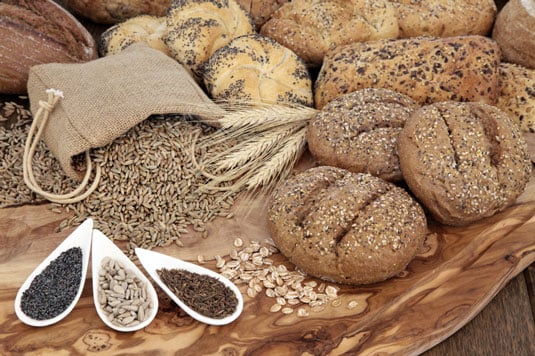
Eating 100 percent whole-grain cereal, baked goods, and pasta adds fiber to your diet and helps slow down the digestion and absorption of the starches in the grain. Most people consume grains on a daily basis; it’s recommended to incorporate at least three servings of whole grains every day.
Look for “100 percent whole wheat” or “100 percent whole grain” on the ingredients list to be sure the product you’re buying is really made from the whole grain.
Poultry, chicken and turkey, are lower in saturated fats than beef and are often used in place of red meat in low-fat diets to reduce the cholesterol-raising and inflammatory effects of eating saturated fat.

One cup of cooked chicken breast meat without the skin has only 1 gram of saturated fat and slightly more than 200 calories (dark meat from the legs and thighs has a little more fat and calories). Turkey has even less saturated fat than chicken.
Buy a whole chicken or turkey and roast the bird in the oven, and then remove the skin before serving (roasting with the skin on makes the meat more flavorful). You’ll have enough for dinner and lots of leftovers that you can use for other meals. Add cooked, chopped turkey or chicken to a regular garden salad to turn it into a full meal. Or make healthful sandwiches on 100 percent whole-grain bread, with a slice of cheese, tomatoes, and lettuce.
The meat from American bison (and game meat such as venison and elk) is much lower in fat than other red meat, and can serve as a delicious substitute for beef.

Bison tastes very similar to beef but is actually a bit richer.
Bison can be used in most dishes that call for beef; however, since bison is lower in fat, you’ll have better results if you use lower temperatures for cooking, especially for ground bison. Bison steaks can be prepared just like beef. They’re best if not cooked past medium doneness (about 145 degrees Fahrenheit measured with a meat thermometer), meaning the steak is still pink in the middle.
Eating yogurt is a great way to get calcium into your diet, plus yogurt contains friendly bacteria that happily populate your digestive system.

The bacteria help to keep your digestive system healthy by keeping the bad bacteria and yeast at bay, while the good bacteria make short-chain fatty acids that help to maintain and repair the walls of your digestive tract.
Some brands of yogurt contain added live bacterial cultures called probiotics that increase the amount and type of friendly bacteria in the yogurt. Eating these brands of yogurt may improve regularity and may even reduce the symptoms of other digestive disorders.
Yogurt is available in a wide variety of flavors. You need to read the label to be sure you’re not ruining the nutritional value of your yogurt by adding too many calories. One cup of nonfat yogurt has less than 90 calories, but sugar and high-fructose corn syrup can ratchet the count up to over 200 calories.
The nutritional content of green and yellow snap beans makes them a great addition to any superfoods diet.
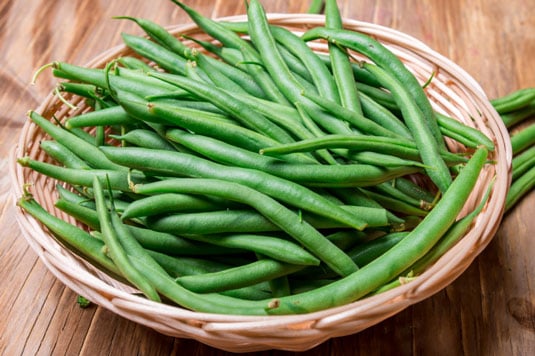
The mild flavor and versatility means that fussy eaters can enjoy these vegetables. Snap beans are low in calories and are a good source of vitamin C, potassium, and folate. Green snap beans are also rich in vitamin A, lutein, and beta-carotene, which trigger antioxidant activity to help prevent damage to the cells in your body.
Green and yellow snap beans are easy to find in the grocery store. Fresh or frozen are best; however, they’re available in cans, too — just watch out for added sodium. Snap beans are frequently cooked and served as a side dish (top them with some almonds and olive oil — two popular superfoods). Green beans are also a favorite ingredient in many casseroles (just beware of added fat and calories.
Cabbage is a good source of vitamin C, vitamin K, and sulphorophane, a phytochemical that may help to fight cancer.

According to the journal Cancer Letter in 2008, diets rich in cruciferous vegetables, including cabbage, reduce the risk of colon and prostate cancer.
You can find fresh cabbage (and possibly red cabbage) in the produce section of every grocery store; look in the deli for premade slaws and salads. Store-bought cole slaw is usually fattened up with creamy dressings, but you can make a healthier slaw at home by using a vinegar-based dressing instead.
The bright orange flesh of winter squash contains lots of vitamin A and carotenoids (phytochemicals related to vitamin A) such as beta-carotene and lutein, which help to keep your vision normal.
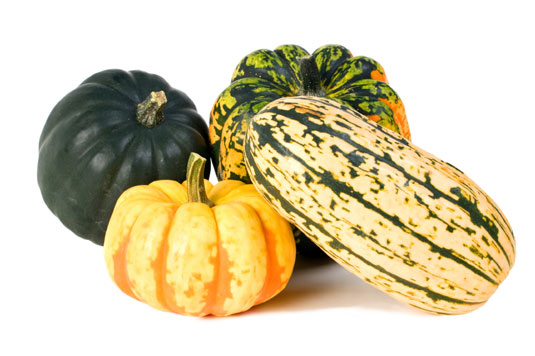
You can find fresh squash in the produce section of your grocery store. Winter squash comes in several varieties, including butternut, acorn, and turban squash, plus pumpkins.
Winter squash is also a good source of calcium, potassium, and vitamin C, while remaining low in calories. One cup of cooked, cubed squash has fewer than 100 calories.
Like other cruciferous vegetables (kale, broccoli, and cabbage), cauliflower contains sulphorophanes that help reduce your risk of some cancers.

Cauliflower is rich in vitamin C and potassium, contains substantial amounts of folate (a B vitamin), and is very low in calories.
In addition to finding cauliflower in the produce section of the grocery store, you can find it in the frozen foods section. It’s available as a single vegetable or in a variety of blends with other vegetables like broccoli. Just watch out for high-calorie sauces and sodium.
Canola oil is good for you because it's rich in both monounsaturated fats (like olive oil) and omega-3 fatty acids (like flax oil).
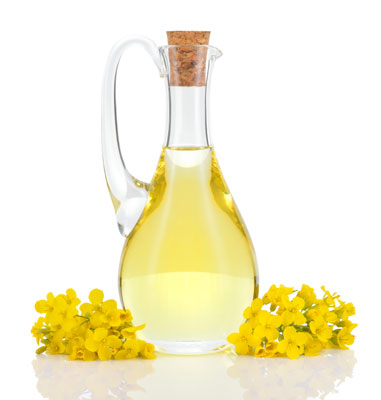
The healthful fats in canola oil are good for your cardiovascular system and help reduce inflammation. Canola oil is also low in omega-6 fatty acids. These kinds of fatty acids are good for you in small amounts, but they may increase inflammation in your body when consumed in large amounts.
Canola oil is good for cooking because it has a very light flavor compared to the stronger taste of olive oil, and canola oil stands up to heat much better than flax oil, which breaks down quickly when exposed to the high temperatures of cooking.
Grapes contain polyphenols such as resveratrol, anthocyanins, and other flavonoids that help reduce inflammation.

According to an article published in 2001 in the journal Circulation, subjects who drank grape juice every day for two weeks had better blood flow. Red wine remains a superfood because the fermentation improves the absorption of the polyphenols. However, grapes are close behind, and grape juice is a good choice for those who don’t drink alcohol.
Grapes contain B vitamins, vitamin C, and potassium. One cup of grapes has only 62 calories, so eating a cup of grapes may help tame your sweet tooth without adding a lot of calories.
Choose grapes with dark purple colors because they have the highest concentrations of phytochemicals. You should store your grapes in the refrigerator; you also can freeze grapes, which turns them into a cool summertime treat. Enjoy grapes as a snack or drink grape juice as a beverage.
Mangos are rich in vitamin A and vitamin C, plus a phytochemical called lupeol.
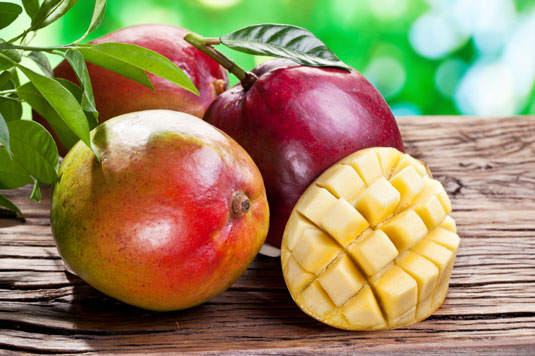
Mangos are sometimes considered to be an exotic fruit, but they’re becoming more popular and therefore easier to find in grocery stores. Their golden yellow flesh tastes something like a cross between a peach and a pineapple.
Lupeol, according to a 2008 article in the journal Nutrition and Cancer, combats prostate cancer cells in the lab. Mangos also contain another phytochemical called mangiferin that may help to prevent cancer and immune system diseases, according to research published in the journal Biochemical Pharmacology in 2003.

